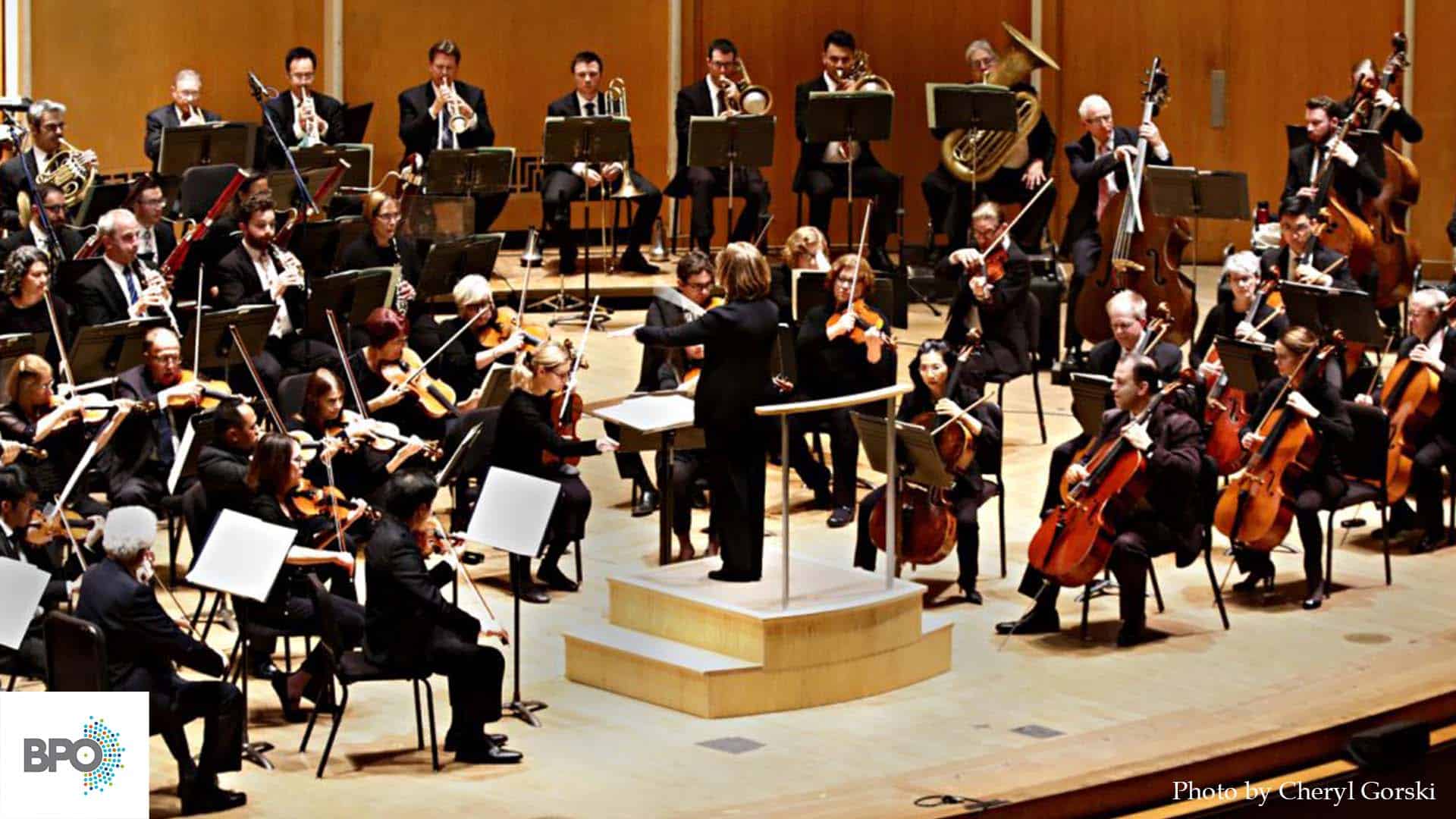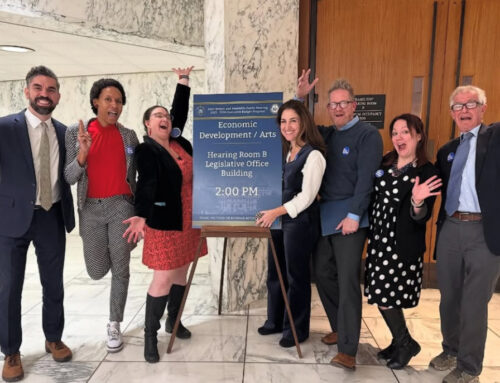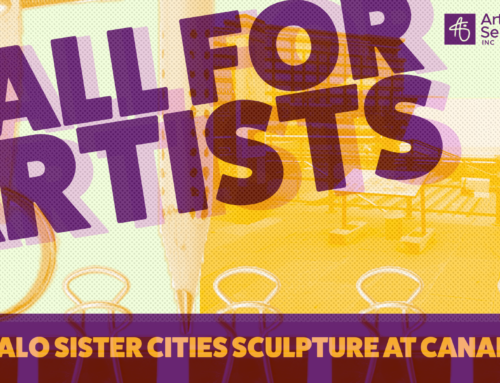Founded in 1935, the Buffalo Philharmonic Orchestra (BPO) is our region’s professional symphony orchestra. Under the artistic leadership of JoAnn Falleta, the BPO provides artistic excellence and integrity to enrich the quality of life in Western New York through the presentation of live symphonic music and other musical events which educate and entertain the broadest possible audiences within and beyond the Western New York region.
For this month’s Accessibility in the Arts spotlight, we sat down with the BPO’s Director of Marketing, Patrick O’Herron, to learn more about the organization and its commitment to diversity, equity, and inclusion.
ASI: Tell me a little about the history of the Buffalo Philharmonic Orchestra: When and how did it begin?
PO: After the rise and fall of several forerunners, the BPO was founded in 1935, performing most often at the Elmwood Music Hall, which was located at Elmwood Avenue and Virginia Street and demolished in 1938. During the Great Depression, the orchestra was initially supported by funds from the Works Progress Administration and the Emergency Relief Bureau as a way to employ musicians. Over the decades, the orchestra has matured in stature under outstanding music directors including William Steinberg, Josef Krips, Lukas Foss, Michael Tilson Thomas, Julius Rudel, Semyon Bychkov, and Maximiano Valdes. Many distinguished guest performers have graced the orchestra’s stage, including Sergei Rachmaninoff, Isaac Stern, Aaron Copland, Van Cliburn, Yo-Yo Ma, and Renee Fleming. The Buffalo Philharmonic has issued more than 50 recordings in its history. It has toured abroad twice: a six-city European tour in 1988, and a four-city tour of Poland in 2018.
Since 1940, the orchestra’s permanent home has been Kleinhans Music Hall, a National Historic Landmark designed by Eliel and Eero Saarinen with an international reputation as one of the finest concert halls in the United States. Since its inception in 1935, the BPO has served as Buffalo’s cultural ambassador. JoAnn Falletta is the Music Director of the Grammy Award-winning orchestra, which presents more than 120 Classics, Pops, Rock, Kids and Youth concerts each year.
ASI: How has your education and background impacted and shaped your work, and the Orchestra’s mission?
PO: I received my master’s degree through the Arts Management program at the University at Buffalo while simultaneously working nearly full-time for the Buffalo Philharmonic Orchestra. I first started in the box office, but with a hunger to learn as much as I could about the organization and the arts management field, I took on various projects for the development and operations teams before eventually landing a role as Education Coordinator, overseeing the management of the BPO’s Youth Concert Series, Symphony Scholars program for teens, and other projects. Upon graduating from UB, I returned to New York City where I held roles for the national arts advocacy organization Americans for the Arts and Arts Brookfield, the in-house arts and events program of global real estate giant Brookfield. Working with arts of all mediums—music, theatre, dance, visual art and design—and being able to do so on a national and international stage, really broadened my perspective of the impact that the arts have on all of our lives. It has been a joy to bring my varied experience back to the BPO in the Marketing Director role nearly 10 years later, and to utilize my toolbox of ideas and inspiration to further the orchestra’s mission of providing a world-class symphonic experience for the Western New York community.
ASI: In such an uncertain time, how has the BPO been able to reach a diverse and inclusive audience?
PO: The BPO has a longstanding commitment to diversity, equity and inclusion. In 2016, the BPO was the first cultural organization in Western New York to sign Mayor Byron W. Brown’s Opportunity Pledge, affirming our commitment to foster, cultivate and preserve a culture of diversity, inclusion, fairness and equality. We formed a Diversity Council at that time, comprised of community leaders of all backgrounds who guide our work in this area. Since the pandemic hit, our digital media platforms have become our performance venues. Through videos, photos, blog posts, and other media, we celebrate our diversity initiatives and work to expose our audiences to artists and composers of color with which they may not be familiar. The BPO musicians, staff, and board, along with the BPO’s Diversity Council, are in regular discussions now as to how the organization will advance this important area of our work even further.
ASI: Has there been a “victory” moment for the BPO where you have seen the direct impact of the Orchestra in the community?
PO: There have been many! But one of the most recent that stands out in my mind was our East Side Festival held at the Buffalo Central Terminal in the summer of 2019. The East Side Festival brought together a cornucopia of events involving arts, cultural, historical, and culinary organizations, as well as artisans and makers, all from the East Side of Buffalo. The daylong festival culminated in a concert by the Buffalo Philharmonic Orchestra, the repertoire of which paid homage to the rich tapestry of cultures that have thrived on Buffalo’s East Side, past and present, while simultaneously celebrating the restoration of the Terminal itself on the occasion of its 90th anniversary. The event brought thousands of visitors from all backgrounds to the Central Terminal, many of whom had never experienced a live concert by the BPO before. That exposure—the way that the orchestra was able to touch thousands of new hearts that day while celebrating such an important part of Buffalo’s history and culture—was worth every blister on my feet at the end of the night!
ASI: How have you needed to adapt in response to COVID-19? What are some of the challenges you’re facing? Have you been surprised by any unexpected advantages?
PO: In late March, the BPO was forced to cancel live performances and adapt to a new normal, which meant all staff and musicians working from home. Since that time, we have developed a robust digital marketing strategy. Our musicians began releasing short solo performance videos, the excitement for which rolled into a larger project, a video rendition of the finale from Stravinsky’s ‘Firebird’ with individual parts played from home by more than 50 BPO musicians while JoAnn Falletta conducted. Link: https://youtu.be/WGnC6Cl1Wow
Our biggest challenge now is planning for the future of the orchestra while facing so many unknowns. New York State has not yet announced protocols for reopening large indoor concert venues like Kleinhans Music Hall. We are hopeful that we will be able to return to live audiences soon, and to do so safely, but no matter the scenario, we are committed to presenting beautiful symphonic music for the Western New York community in whatever way, shape or form that takes.
The unexpected advantage of this pandemic has been the need for the BPO to dive deeper than ever before into content creation for a digital world. We continue to improve upon our abilities in this area with each project, engaging with our audiences in new and inventive ways.
ASI: Are there any individuals, organizations, or programs within Western New York or beyond that have influenced or helped to shape your vision for the BPO? Is there anyone you’d like to shout out?
PO: We maintain strong connections with all of our cultural cohorts throughout the Western New York community, large and small. Recent collaborations include those with the Olmsted Parks Conservancy, Graycliff Estate, Darwin Martin House, Irish Classical Theatre Company, Richardson Olmsted Campus and Hotel Henry, Buffalo Central Terminal Restoration Corporation, and countless others. We are so appreciative of all of our cultural partners, and to thrive in a community that has created such a cultural mecca through its unwavering support.
Of course, the BPO would not exist without the support of Erie County, the New York State Council on the Arts, corporate supporters like M&T Bank, which has been with us through thick and thin, our tireless board volunteers, and the many, many individuals who donate and subscribe each year, who we cannot thank enough.
ASI: With regard to accessibility, diversity, and/or inclusion, what kinds of things would you like to see from arts and cultural organizations in Western New York? What can our community do better?
PO: The BPO is deeply committed to increasing racial diversity in the orchestra field. Our Diversity Council was formalized in 2016 to reaffirm our longstanding commitment to increasing diversity in classical music through the presentation of diverse programming, supporting artists of color, and engaging with every part of the community in meaningful ways. In 2018, we hired Jaman E. Dunn, a young African American man, as the BPO’s first Assistant Conductor, Community Engagement. Jaman serves as our community ambassador, helping us to broaden our reach to the entire Western New York community through many initiatives, like our East Side church visit program.
In the interest of diversifying our talent pool for orchestra auditions, for the last four years we have participated in the Sphinx Organization’s audition showcase for Black and Latinx musicians from across the country. This gives us a chance to identify talented musicians of color who are given access for funding to attend our auditions.
The BPO’s West Side Connection outreach program celebrates the West Side neighborhood of Buffalo, in which the BPO makes its home. It’s a multinational neighborhood with an exciting history of cultural traditions from the immigrant and refugee populations that reside there. The program provides K-12 students with educational activities, guest artist visits from the Junior Winner of the Sphinx Competition for young Black and Latinx classical string players, and a culminating concert with both live and an online, on-demand access reaching thousands.
ASI: Where would you like to take the BPO next?
PO: Physically? The musicians may kill me for even suggesting it, but we recently found a photograph from the 1930s showing the BPO playing on a floating barge in the middle of Hoyt Lake. Wouldn’t that be wild to recreate?! Imagine, your BPO plays Handel’s ‘Music for the Royal Fireworks’ while set afloat in the middle of picturesque Delaware Park while bombastic fireworks explode overhead! Maybe one day…
As for the organization’s vision for the future, we are all motivated to present the best possible artistic works for the best possible audiences at the best possible times through the best possible means. We understand that the world is changing, and that we can be a catalyst for positive change through the presentation of works and initiatives that both respond to and advance the rallying cry of the times. My hope is that we continue to be able to expand our reach within the community even further, really solidifying the BPO in the minds of Western New Yorkers as a welcoming sanctuary for all with… heck… some darn good music, and something for every taste!






